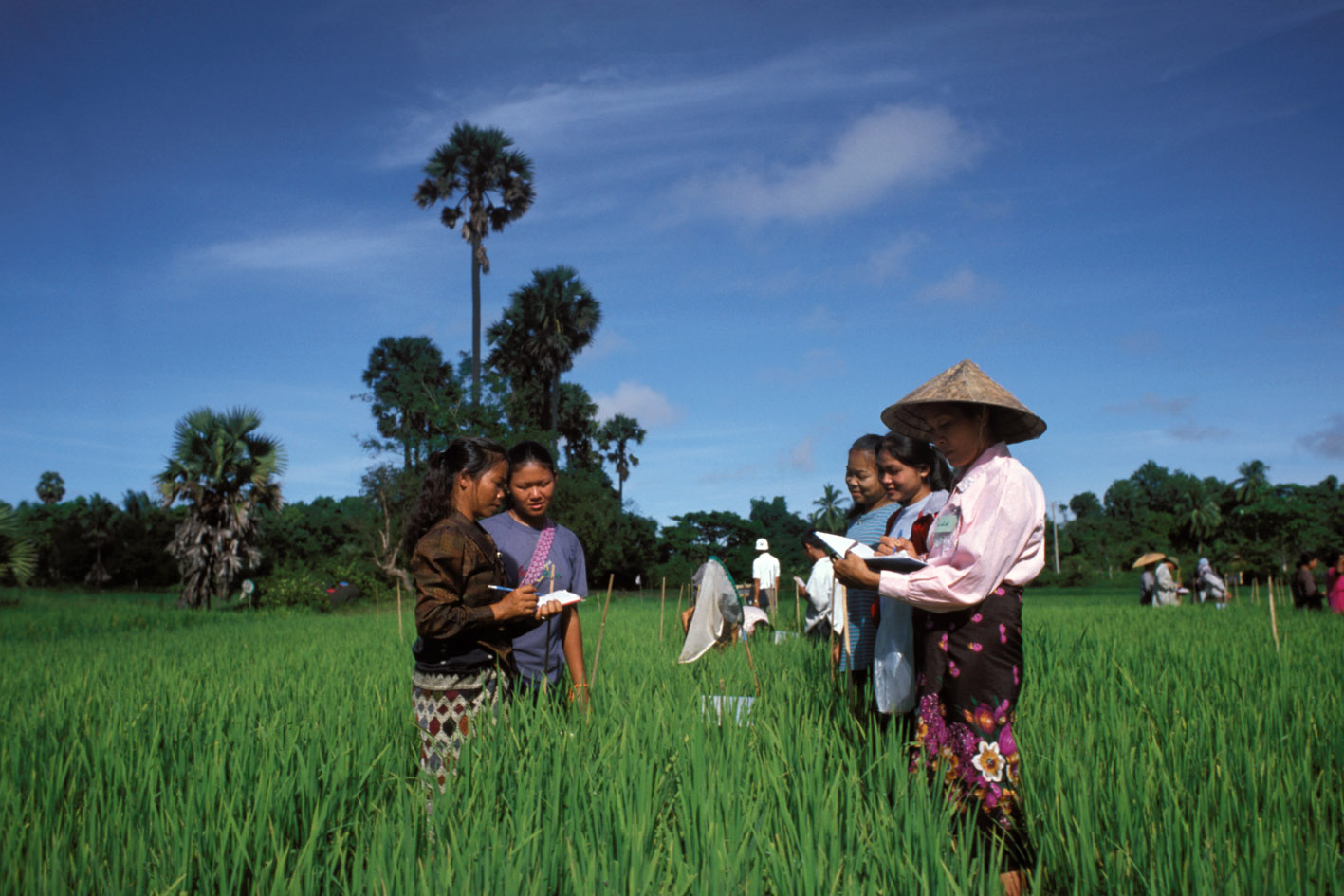Impact Evaluation of the Integrated Agricultural Productivity Project 2013, Household Midline Survey - Round1
Bangladesh, 2013
Get MicrodataIdentification
BGD_2013_IAPP-W1_v01_EN_M_v01_A_OCS
Impact Evaluation of the Integrated Agricultural Productivity Project 2013, Household Midline Survey - Round1
| Name | Country code |
|---|---|
| Bangladesh | BGD |
Agricultural Survey [ag/oth]
This is the midline round 1 survey of Integrated Agricultural Productivity Project (IAPP) conducted in Bangladesh.The baseline survey was conducted in 2012. Round 1 of the midline survey is followed by round 2 in 2014 and the endline in 2015.
The IAPP project is designed to improve the income and livelihoods of crop, fish, and livestock farmers in Bangladesh. It consists of four separate components:
Component 1: Technology Generation and Adaptation;
Component 2: Technology Adoption;
Component 3: Water Management;
Component 4: Project Management.
The Impact Evaluation (IE) of the IAPP project will contribute to understanding the drivers of technology adoption through two lenses. First, the overall project approach will be evaluated using a randomized phase-in of project villages (referred to as the "Overall Project Evaluation"). The Overall Project Evaluation will measure the effects of Components 2 and 3 of IAPP. All sub-components will be measured, with special focus on the crops and fisheries sub-components. Second, innovations will be tested through a randomized control trial to understand what approach to demonstration plots can deliver higher results (referred to as the "Demonstration Plot Evaluation"). The Demonstration Plot Evaluation is designed to test a fundamental question about technology adoption: to what extent can "learning by doing" increase technology adoption over "learning by observing"? It will compare the relative effectiveness of single demonstration plots (the standard approach) to more distributed demonstration strategies which allow more people to experiment with new technology. The Demonstration Plot Evaluation will focus on the crops sub-component.
Sample survey data [ssd]
Households
Scope
The scope of the Impact Evaluation of the Integrated Agricultural Productivity Project includes:
- HOUSEHOLD:
-Household Roster
-Education
-Labour
-Housing
-Social Networks
-Assets, Income and Expenditures
-Savings and Access to Finance
-Household Gardens
-Food Security
-Risk and Ambiguity Aversion
-Formal Insurance and Negative - AGRICULTURE:
-Access to Extension and Other Trainings
-Farmer Groups
-Production
-Labour for Basic Agricultural Activities
-Irrigation
-Inputs
-Technologies - LIVESTOCK, POULTRY AND FISHERY
| Topic | Vocabulary |
|---|---|
| Agriculture & Rural Development | FAO |
| Food (production, crisis) | FAO |
| Water | FAO |
| Animal health | FAO |
Coverage
Regional
Producers and sponsors
| Name | Affiliation |
|---|---|
| Florence Kondylis | DIME, Development Research Group, World Bank |
| Maria Jones | DIME, Development Research Group, World Bank |
| Daniel Stein | DIME, Development Research Group, World Bank |
| Name | Role |
|---|---|
| The Global Agriculture and Food Security Program | Funded the study |
Sampling
In midline round 1 survey, the scope and sample are limited, as it focused specifically on the activities of the assigned demonstration farmers. In order to learn about sampling strategy in MLR1, please refer to the document: Sampling Strategies for MLR1.xlsx provided under the Related Materials tab. The above document provides a guide on how crop demonstration farmer(s) were sampled in a target village-district. To read about sampling strategy in baseline survey, please refer to the document: iapp_baseline_report_final_with_appendices.pdf provided under the Related Materials tab
Considering the different sampling strategies explained above, the study constructed probability weights to account for the consequent overrepresentation of Barisal and Rangpur districts.
Data collection
| Start | End |
|---|---|
| 2013-06-01 | 2013-08-30 |
Data processing
The survey was done using paper questionnaires, with first entry of the data occurring in the field concurrent to data collection. Consistency checks and error reports were routinely run on the first entry data, to ensure high data quality. All questionnaires were then entered a second time by a team of data entry clerks in Dhaka. First and second entries were compared, and all discrepancies corrected through manual checks of the hard-copy questionnaires. In some cases, the field team was sent back to the field for verification.
Data Access
| Is signing of a confidentiality declaration required? | Confidentiality declaration text |
|---|---|
| yes | See https://microdata.worldbank.org/index.php/terms-of-use |
Use of the dataset must be acknowledged using a citation which would include:
- the Identification of the Primary Investigator
- the title of the survey (including country, acronym and year of implementation)
- the survey reference number
- the source and date of download
Example:
Kondylis, Florence., Maria Jones., Daniel Stein. DIME, Development Research Group, World Bank. Impact Evaluation of the Integrated Agricultural Productivity Project 2013, Midline Household Survey - Round 1 (IAPPIE-ML1 2013). Ref: BGD_2013_IAPPIE-ML1_v01_M. Downloaded from [URL] on [date]
Disclaimer and copyrights
The user of the data acknowledges that the original collector of the data, the authorized distributor of the data, and the relevant funding agency bear no responsibility for use of the data or for interpretations or inferences based upon such uses
Contacts
| Name | Affiliation | URL |
|---|---|---|
| Microdata Library | The World Bank | microdata.worldbank.org |
Metadata production
DDI_BGD_2013_IAPP-W1_v01_EN_M_v01_A_OCS_FAO
| Name | Affiliation | Role |
|---|---|---|
| Office of Chief Statistician | Food and Agriculture Organization | Adoption of metadata for FAM |
| Development Economics Data Group | The World Bank | Documentation of the DDI |
Metadata version
BGD_2013_IAPP-W1_v01_EN_M_v01_A_OCS_v01
